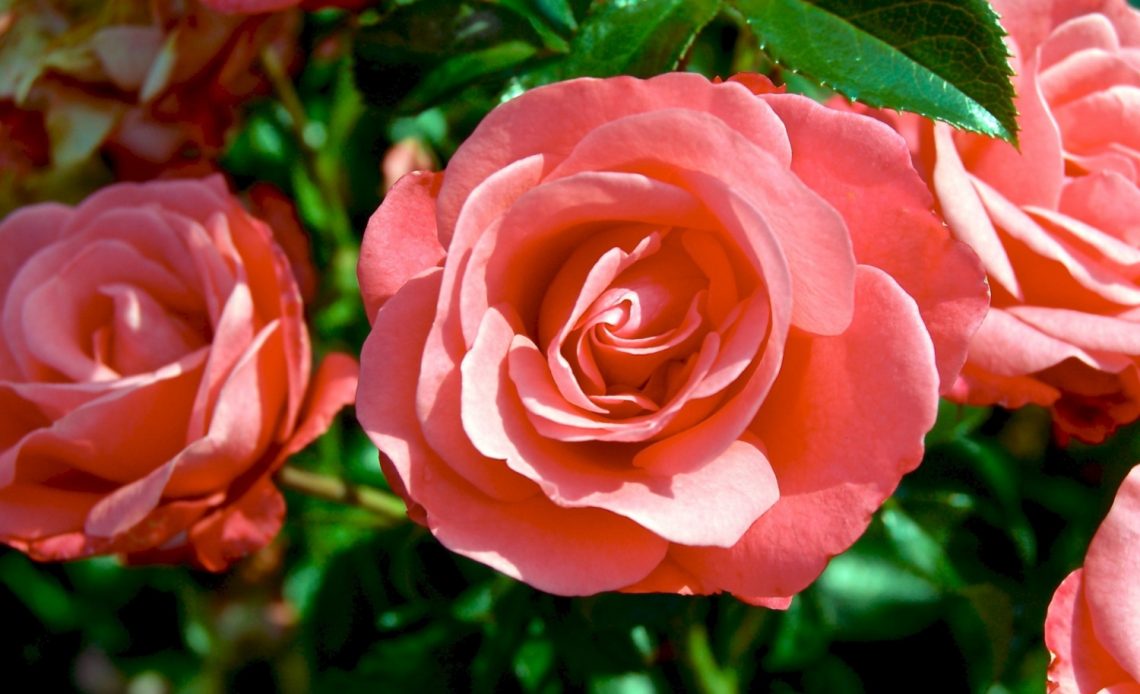

We’re here to help! Wild Yards is a completely free website that is 100% dedicated to helping you create a wildlife-friendly, sustainable yard. Read more
WildYards is reader-supported. When you buy a product through a link on our site, we may earn a comission. Every product is independently selected by our (obsessive) editors and our reviews are unbiased and objective. Read more about our mission or our privacy policy.
Roses are a gorgeous addition to any landscape, and although their delicate appearance might make you think they’re tricky to care for, they’re actually very easy to grow. When planted in the appropriate conditions, roses can thrive for upwards of 30 years. Of course, the rose’s longevity doesn’t mean it’s immune to health issues. If you’ve noticed yellow leaves on roses in your garden, you may be wondering what’s going on and what you can do to improve their health.
Nutritional deficiencies are a common cause of yellow leaves on roses. Underwatering the plants, overwatering them, and planting them in the wrong type of soil can contribute to yellow foliage, too. Additionally, fungal infections and too much or too little sunlight can also lead to yellow leaves.
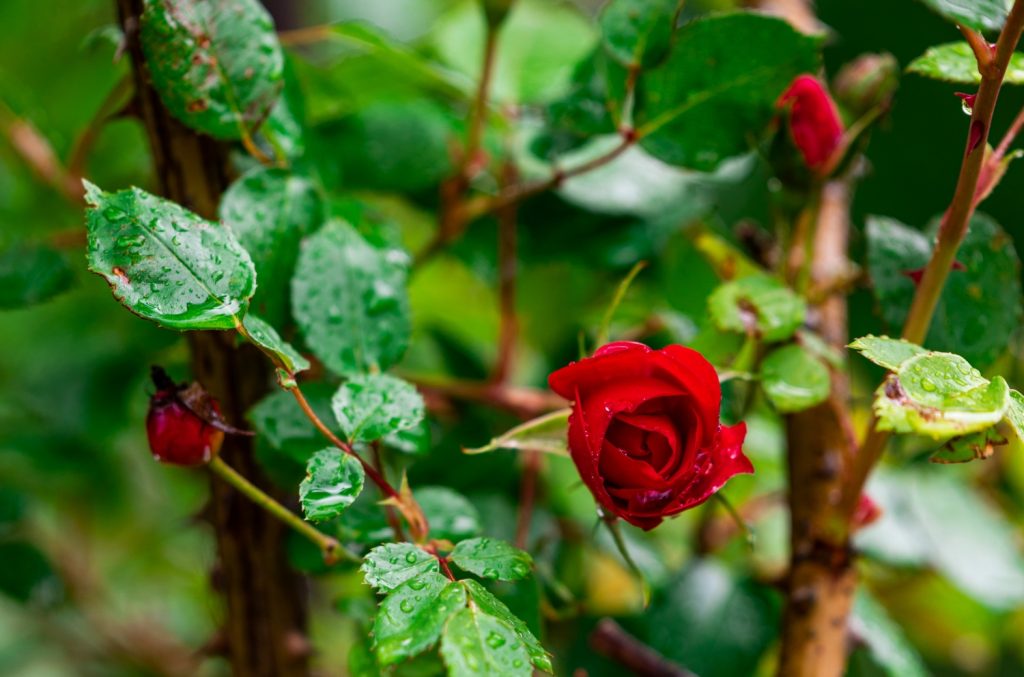
10 Causes of yellow leaves on roses, and solutions that actually work
When your rose’s leaves turn yellow, it’s a sign that there’s an underlying problem. In order to treat the foliage, you’ve got to correctly identify the underlying problem so you can implement the appropriate solution. Here are 10 common causes of yellow leaves on roses, and 10 solutions that will help green the leaves back up.
The problem: underwatering
Roses grow best in loamy soil that drains well but stays uniformly moist. If the soil dries out and stays dry for too long, whether it’s due to a regional drought or simply underwatering, then the plants will begin to wilt and their leaves will turn yellow and brown. Underwatering is one of the most common causes of yellowing leaves in roses. Fortunately, it’s easy enough to determine if this is the cause of your rose’s foliage woes. Stick your finger down into the soil. If it feels dry 3 inches down, then the plant could use a drink.
The solution: water the plant more often
Roses are pretty low-maintenance, but they do benefit from a regular watering schedule. In many regions, local rainfall is enough to keep these plants happy. But if your area is going through a dry spell, then you’ll need to break out the watering hose more often to keep your roses healthy. You should water your roses 2 to 4 times a week under normal conditions, and every day or every other day in hot, dry weather. A few deep, soaking waterings are better for roses than small drinks. Water your roses in the morning to give the extra moisture plenty of time to run off before nightfall.
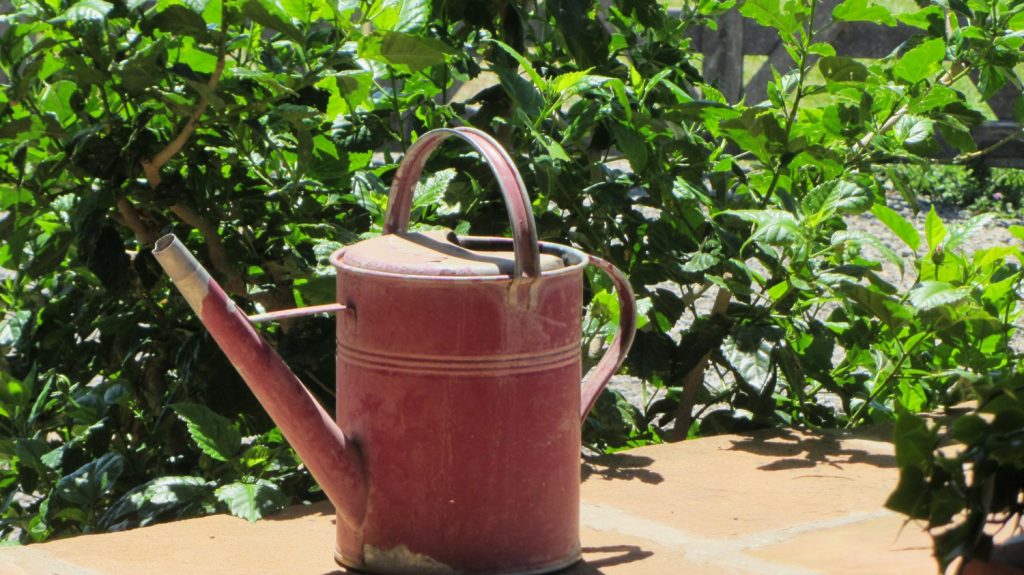
The problem: overwatering
Underwatering doesn’t do your rose bushes any good, but overwatering can have the same effect. Remember, roses like moist soil, but that soil must drain well. Soggy soils don’t leave enough pore space for air to penetrate. And with no oxygen, it’s only a matter of time before your rose’s leaves turn yellow. Typically, when roses suffer from overwatering, it’s due to an increase in rainfall. Of course, being too generous with the garden hose can lead to overwatering, too. Sometimes, though, the problem isn’t necessarily that your roses are getting too much water, but rather that the water has nowhere to go. Compacted soils with poor drainage can also cause symptoms of overwatering.
The solution: turn off the hose and improve soil drainage
The first thing you need to do to help your overwatered roses is turn off the hose. If the soil that your roses are planted in is porous, then all you need to do is give the plants a little time to dry out. But if the soil has poor drainage, then you’ll need to amend it to help excess water escape. Use coarse sand or gravel to break up the soil and give your rose bush’s roots plenty of air to breathe. If your roses are situated in a low spot in your yard that tends to hold water no matter what you do, then you’ll need to move your roses to higher ground to help improve their yellowing foliage.
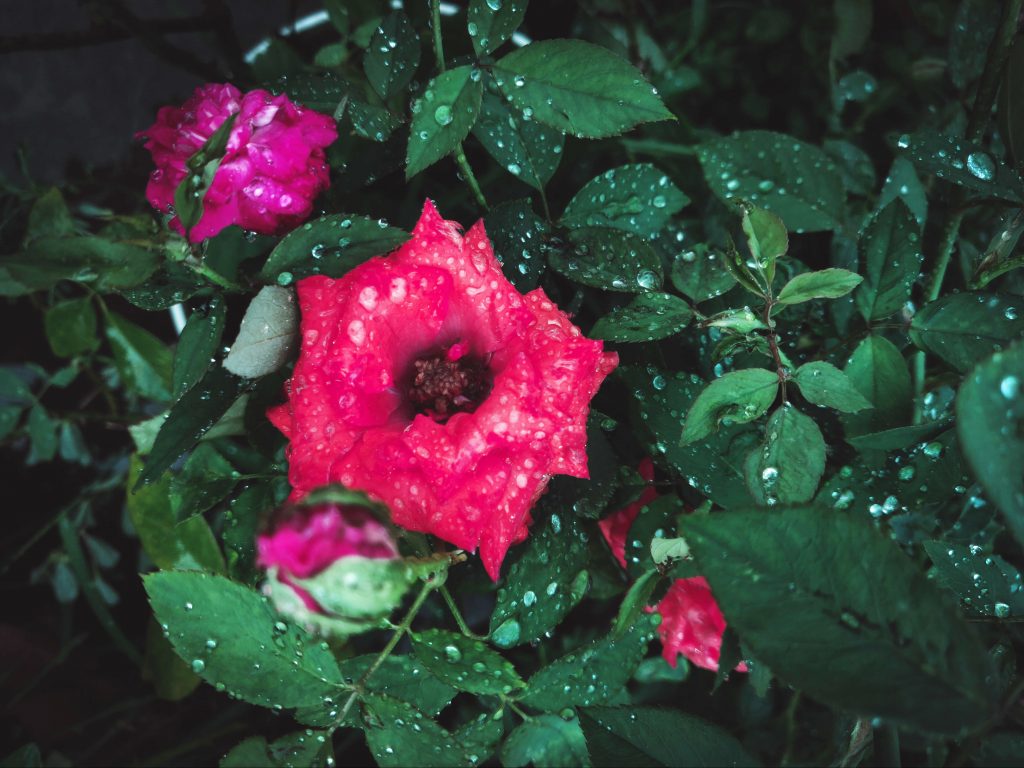
The problem: nutritional deficiencies
If neither underwatering nor overwatering are the culprits behind your rose’s yellow leaves, then your next thought should be nutritional imbalances. Examine your rose bush carefully to determine if it’s showing symptoms of one of the following deficiencies.
- Iron deficiency — also called iron chlorosis, iron deficiency in plants causes younger leaves to turn pale green, yellow, and white while the veins of the leaf maintain their green color.
- Magnesium deficiency — similar to iron deficiency, magnesium deficiency causes leaves to turn yellow while the veins stay green. However, with magnesium deficiency, older leaves are more likely to be affected first.
- Nitrogen deficiency — if your roses are suffering from a nitrogen deficiency, you’ll notice yellow leaves all over the plant, whether the leaves are young or old. Nitrogen deficiency also results in stunted growth.
Any one of these mineral deficiencies can contribute to yellowing foliage. But it’s not out of the realm of possibility for your roses to be suffering from multiple deficiencies at once. The more minerals your roses are missing, the faster you’ll need to act.
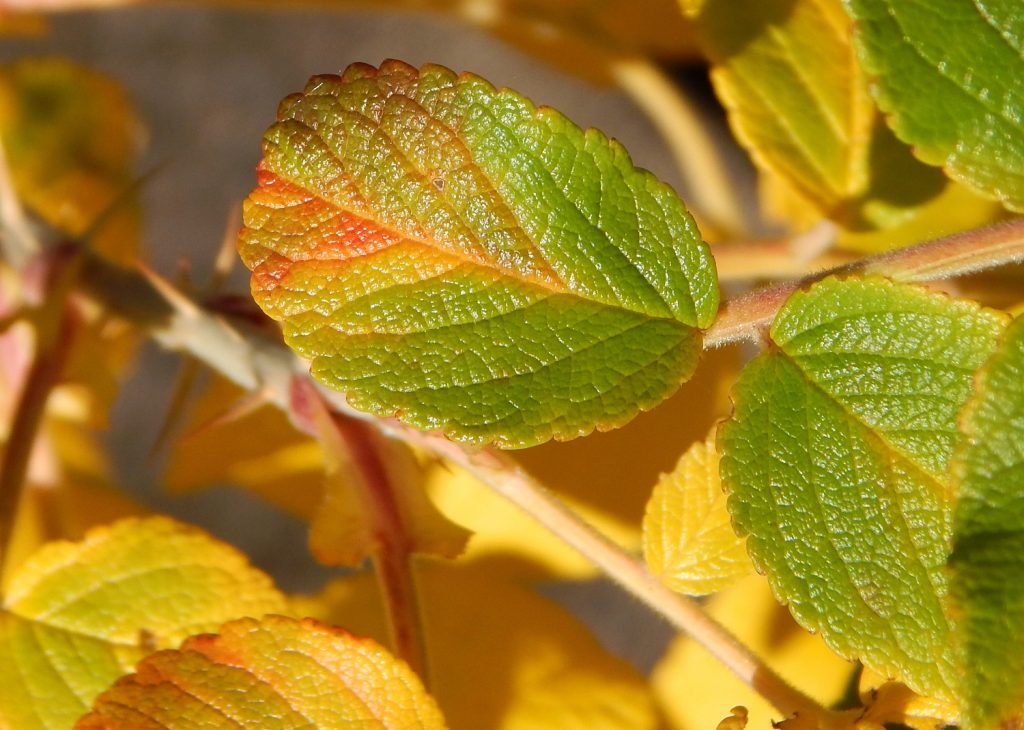
The solution: replace missing minerals
If you suspect a mineral deficiency is plaguing your roses, purchase an at-home soil test kit to measure the nutrients in the soil. This is will tell you how much of which minerals you need to add so you can amend the soil properly.
- Iron deficiency — for roses struggling with low iron levels, try blood meal. This organic fertilizer is naturally rich in iron and will help those yellow leaves turn green again. Use a weed fork to work ¼-cup of blood meal into the soil surrounding your roses.
- Magnesium deficiency — Epsom salts are a good home remedy for low magnesium levels. Add 2 tablespoons of Epsom salts to a gallon of water, and use this to feed your roses.
- Nitrogen deficiency — Homemade compost and aged manure are both excellent sources of nitrogen. But alfalfa meal, commonly found at feed stores, is a great alternative if compost and manure aren’t available.
Once you’ve corrected any nutritional deficiencies, your rose bushes should show signs of improvement within a few days, although it can take several weeks for the plant to recover completely. Use a soil test to measure nutrient levels again in a month to determine whether or not you’ll need to re-apply a specific mineral.
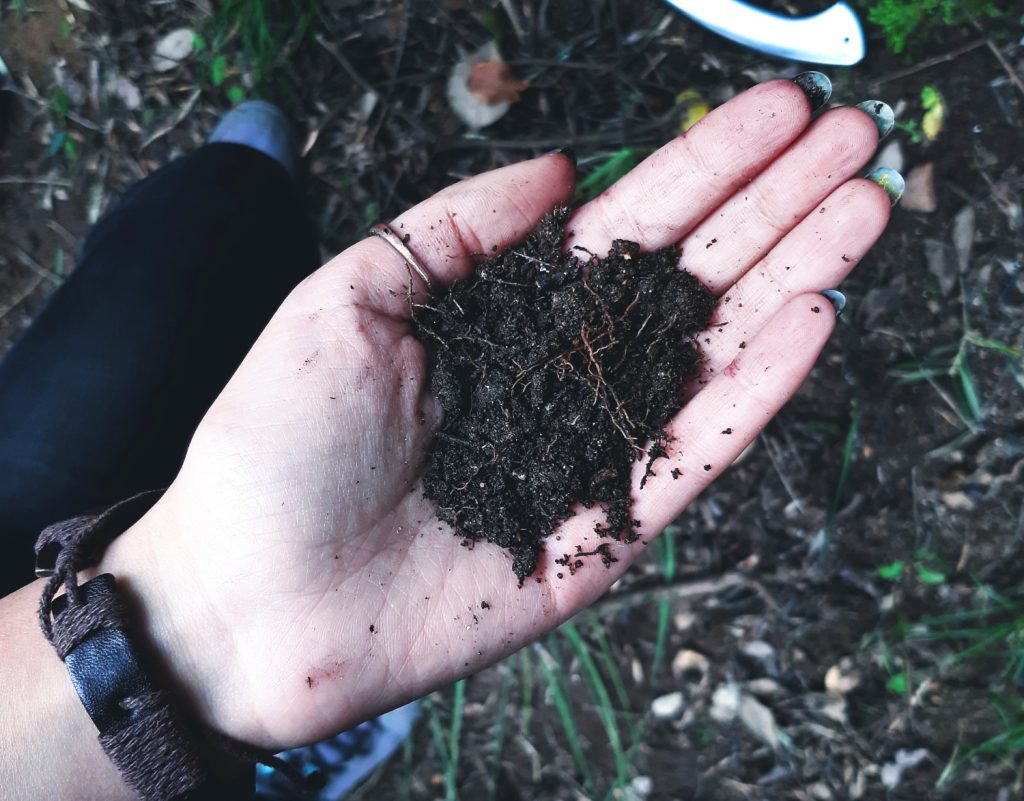
The problem: wrong soil pH
Sometimes, it’s not that there aren’t enough minerals in the soil, it’s just that the soil is at the wrong pH for your roses to be able to utilize those minerals. Roses perform best in soil that has a pH of 6.5. It’s at this point that nutrients are most accessible to plants. If your soil is too acidic, or if it’s more alkaline in nature, then your roses won’t be able to function as they should. The result is impaired nutrient absorption and, potentially, yellowing leaves.
The solution: amend the soil
Once again, you can use an at-home soil test kit to determine your soil’s pH. If your soil is too acidic for your roses to truly thrive, then raise the pH by adding alkaline amendments, like eggshells and crushed limestone. For alkaline soils, use peat moss or manure to bring the pH level down a bit. Once the soil adjusts, mineral availability will improve, and your rose’s foliage will turn green again.
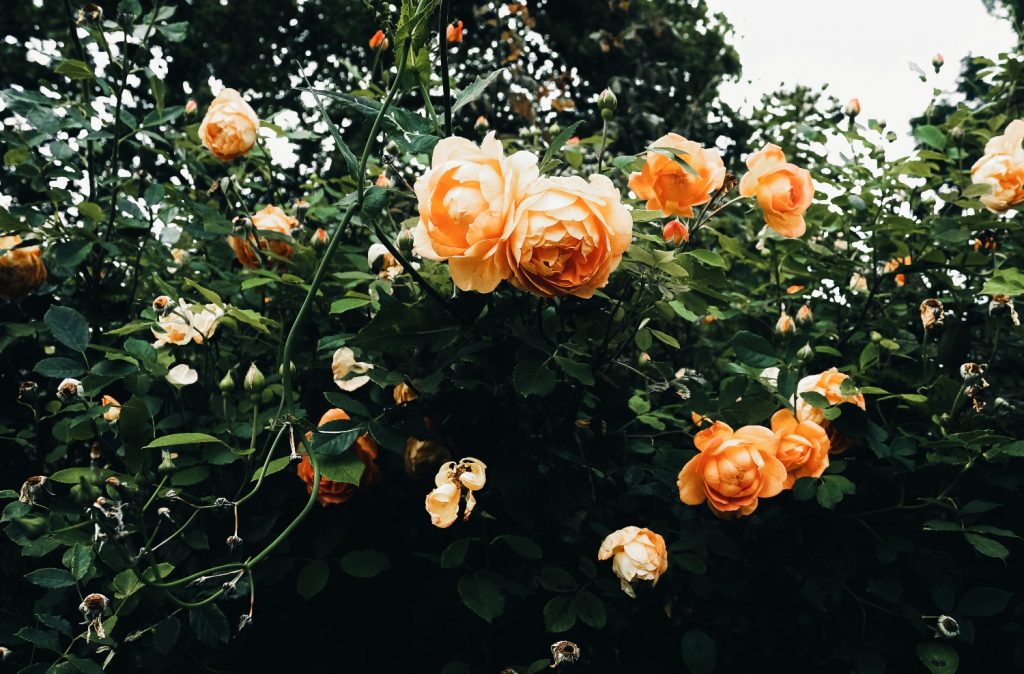
The problem: too much fertilizer
Roses need plenty of nutrition to look their best, and their nutrient levels go up when they’re in bloom. It’s recommended to feed roses regularly during the flowering season to ensure plants have all of the minerals they need to create new buds. However, it is possible to over-fertilize your rose bushes. When that happens, excessive nitrogen levels build up burning the leaves and causing them to turn yellow.
The solution: test the soil before feeding
We feed our plants with the best of intentions, but the truth is unless you test your soil, there’s no way of knowing just what they need. While it’s true that roses should be fed every 2 to 4 weeks during the growing season, it’s still important to check soil nutrients regularly so you don’t make the mistake of feeding them too much.
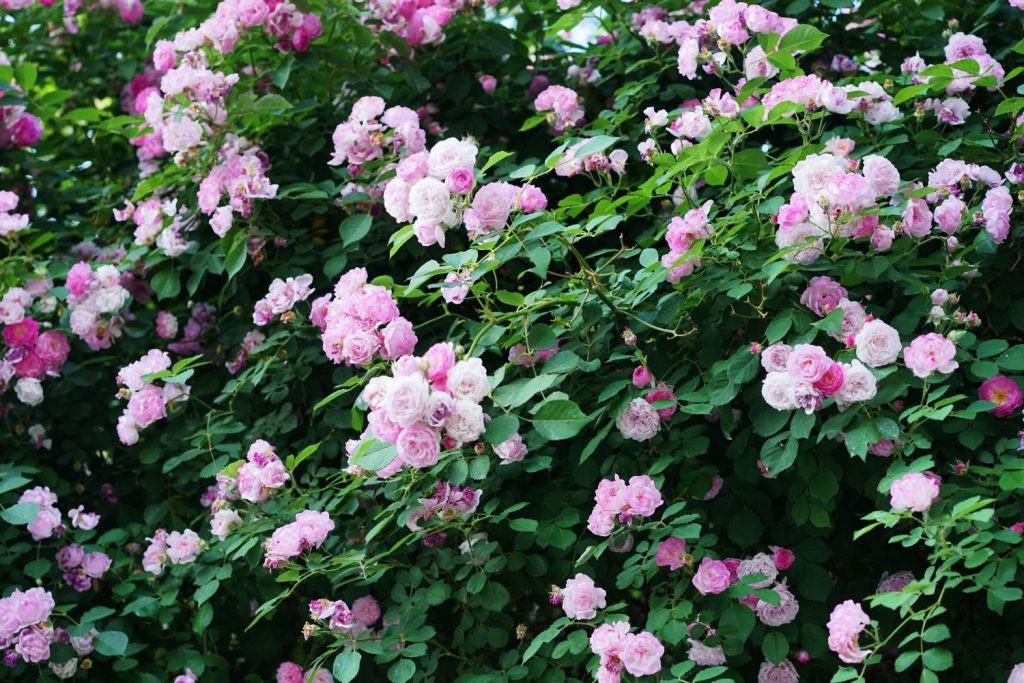
The problem: disease
Roses can fall victim to multiple diseases, several of which are known to cause yellow leaves. Inspect your rose bush’s foliage carefully for signs of the following infections:
- Black spot — roses with this fungal infection develop small brown to black spots on the leaves. Shortly after these blemishes show up, the infected leaves turn yellow, eventually drying up and falling off.
- Rose rosette disease — affecting all members of the species, from wild roses to KnockOut varieties, rose rosette disease is a virus that results in the reddening of the stems of the plant, as well as stunted growth. It’s not uncommon for these roses to develop yellow leaves, and plants that have been infected usually die within a year or two.
- Rose mosaic virus — if your rose’s leaves are not uniformly yellow, but instead are green with yellow splotches, then they probably have rose mosaic virus. This disease doesn’t really impact the plant in any significant way, although it can slow its growth.
Roses are pretty hardy shrubs. Even when they’re diseased, they can keep growing, albeit at a much slower rate. Roses can live with a virus or infection for months, but the sooner you identify the problem and treat it, the better.
The solution: supportive care
How you treat your diseased rose depends on the disease itself. No treatment is necessary for a benign condition like rose mosaic virus, and, unfortunately, no treatment is effective for plants with rose rosette disease. However, for fungal infections like black spot, pruning away the affected portions of the plant, disposing of the trimmings properly by throwing them in the garbage, and spraying the plants down with a fungicide will help tremendously. You can further improve your rose’s ability to stave off infections by supporting soil drainage and ensuring the plant gets plenty of sunlight and air circulation.
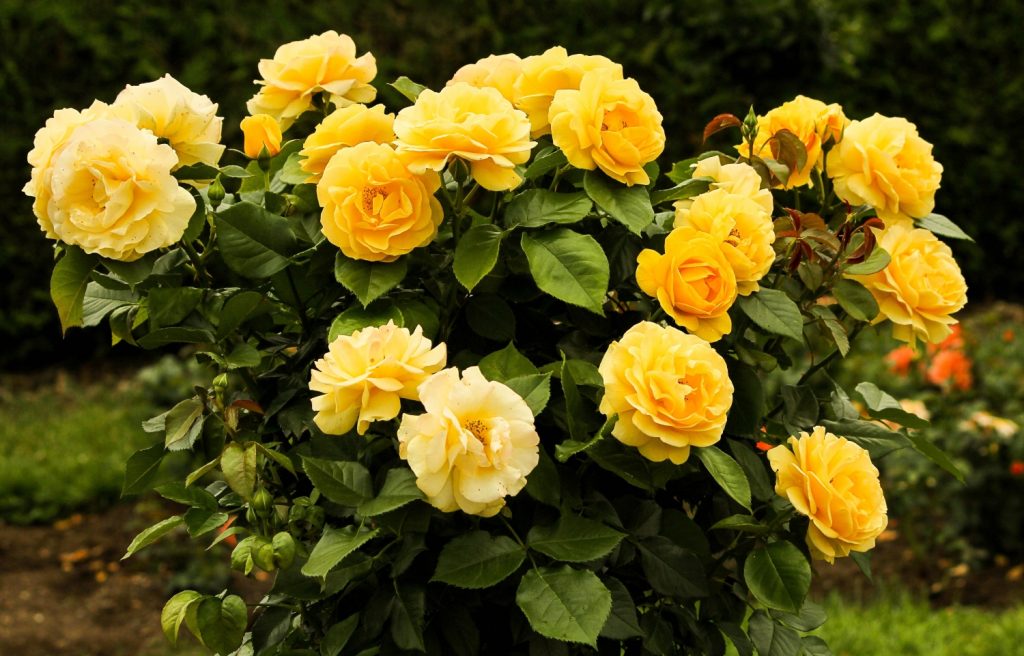
The problem: insect infestation
Aphids, sawflies, thrips, Japanese beetles, slugs, and spider mites are just a few insects that feed on roses. These insects like to nibble on the plant’s foliage, and depending on how many little critters are hiding in between the leaves, they can cause some serious problems. As the leaves sustain more and more damage, they become discolored, turning yellow, brown, and black. If you suspect bugs may be the cause behind your rose’s yellow leaves, inspect the foliage carefully. You’ll probably see insects on the undersides of the leaves and even hiding in the rose blossoms themselves.
The solution: insecticide
While the last thing you want to see is a bunch of bugs eating away at your roses, the good news is, with patience and persistence, you can eliminate them. Use one of our 9 homemade insecticide recipes to spray down your rose bushes. These potent, chemical-free mixtures kill and repel pesky insects so your roses can recover. You can also purchase insecticides from your local nursery to use instead.
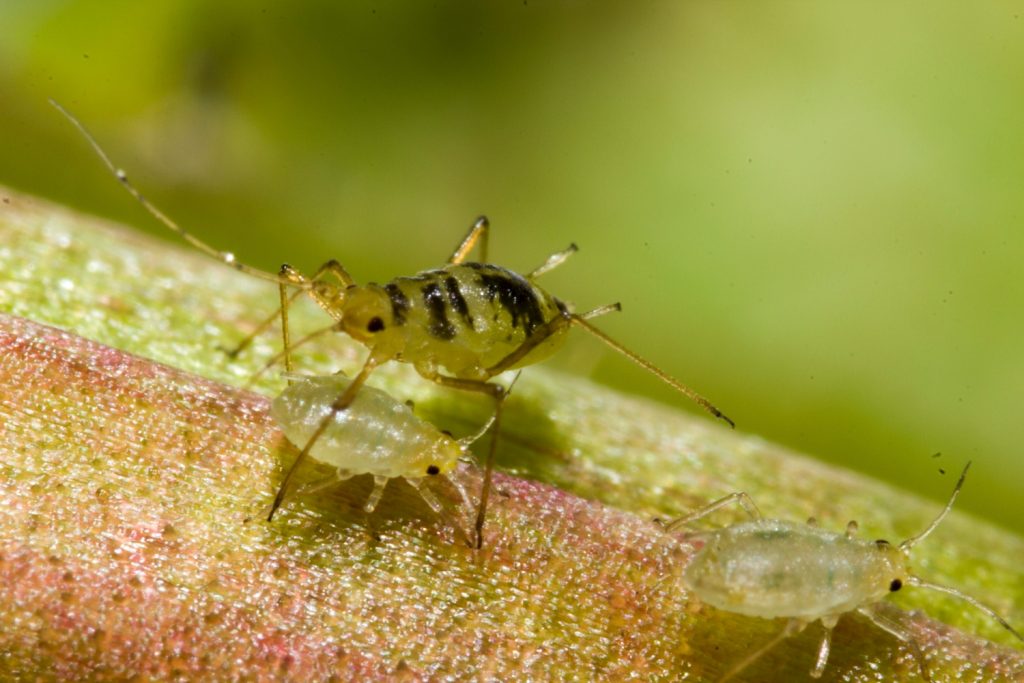
The problem: insufficient sunlight
How much sunlight your rose bush needs depends on its variety. Most roses like 6 to 8 hours of full sun a day. But other varieties require only 4 hours of light. If you don’t know what variety of rose you have, but it’s situated in a shady spot and has slowly developed yellow leaves, there’s a good chance it’s not getting enough sunlight.
The solution: find a sunny location
If your rose bush isn’t getting the light it needs to produce healthy green foliage, then you need to transplant it to a sunnier location. Follow our step-by-step guide to transplanting to ensure a successful move. Once you’ve rehomed your rose bush, it should green up nicely within a few weeks, after it has some time to get established.
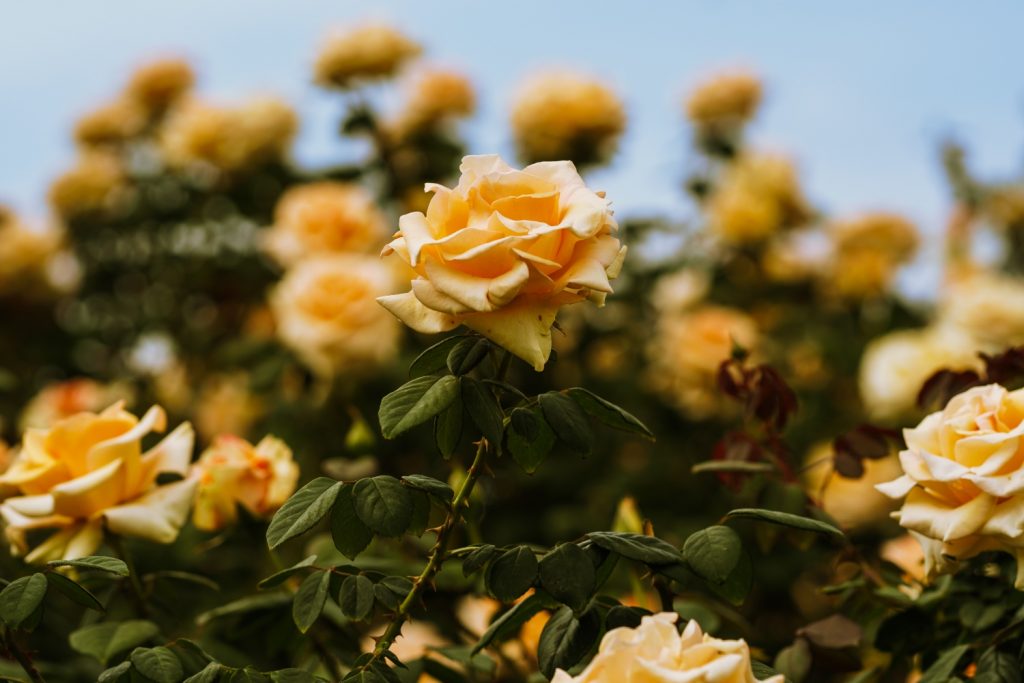
The problem: too much sunlight
Roses need plenty of sunlight, but if they’re growing in an especially hot climate where temperatures regularly reach the 90s and 100s, then they may be getting too much sun. If your roses wilt daily, in spite of your best efforts to keep them well watered, and if their leaves are turning yellow, brown, and falling off, that’s a good sign they’re getting too much sun.
The solution: keep your roses in the shade
In warm climates, roses need to be planted in a place where they get some afternoon shade. Try moving your roses to the east side of your home or a tree, where they’ll get plenty of morning sun, but have a nice break from the heat during the afternoon hours.
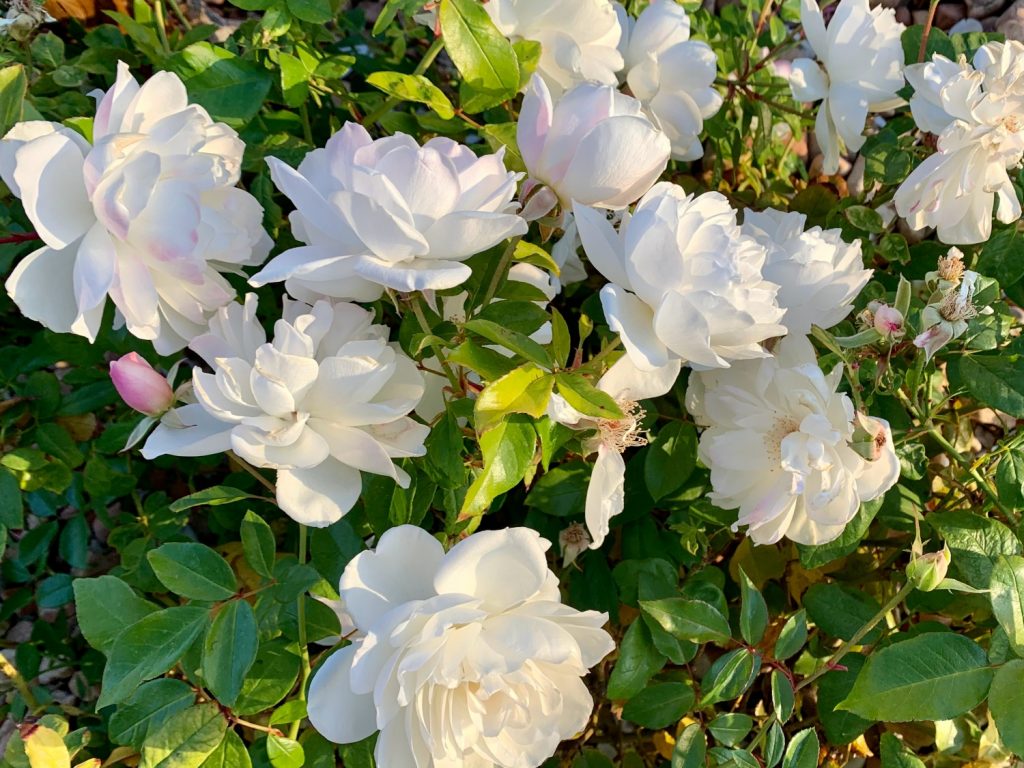
The problem: dormancy
Roses are deciduous, meaning after the growing season in spring and summer, their leaves turn yellow and fall off in preparation for their winter dormancy. If the other plants in your yard are also turning colors, that’s a good sign that your roses are yellowing simply because of the time of year and not another issue.
The solution: patience
If your rose’s leaves are turning yellow because it’s autumn, there’s nothing you need to do to try to fix it. Just be patient! Your rose bush will go dormant over the winter, resting and recuperating in preparation for another growing season. Be sure to check your rose bush periodically throughout the winter. Water the bush when the soil gets dry, but refrain from feeding the plant, since it can’t use the minerals during its dormant period, anyway.
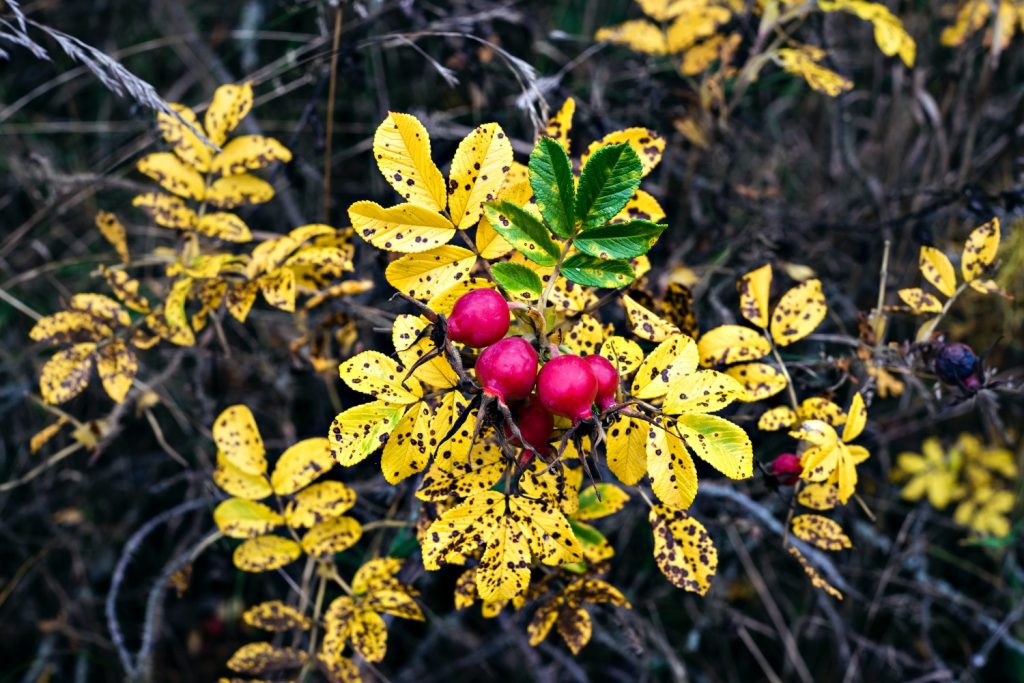
Will a rose’s yellow leaves turn green again?
Yellow leaves on roses typically don’t turn green again. Leaves that have turned yellow aren’t as good at photosynthesizing as green leaves, although they can still help the plant make food for itself. Once you’ve correctly identified and treated the underlying cause of your rose bush’s yellow leaves, its new leaves should sprout a nice healthy green, even if their yellow foliage remains unchanged.
Should you prune yellow leaves off your rose bush?
If your rose bush has a fungal infection, then you should certainly prune away the yellow leaves. And if there are only a few yellow leaves here and there, you can pinch them off with your fingers without doing the plant any damage. But if the whole bush has turned yellow, leave the foliage alone. The plant will need every leaf to help it produce enough energy as it recovers from whatever caused its ailment in the first place.
More tips for preventing yellow leaves on roses
The best, most effective way to prevent yellow leaves in rose bushes is to meet all of the plant’s growing requirements right out of the gate. Plant your rose bush in a sunny location that offers the plant afternoon shade. Ideally, the soil should be loamy and full of organic materials so that it stays moist but still drains well. Use amendments when necessary to adjust the soil pH, and be sure to water the plant deeply whenever the soil dries out.
Proper care and regular inspection of your roses will allow you to treat and prevent yellowing foliage.
